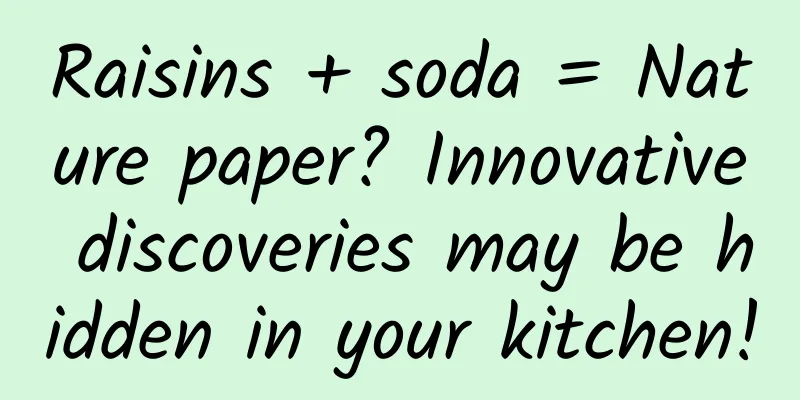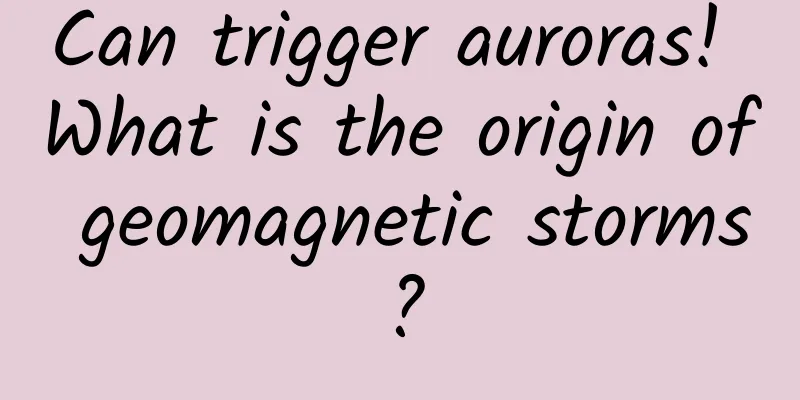Raisins + soda = Nature paper? Innovative discoveries may be hidden in your kitchen!

|
"There is no lack of beauty in life, but there is a lack of eyes to discover beauty." Similarly, there is no lack of science in life, but there is a lack of eyes to discover science in simple phenomena. Have you ever seen bubbles in a carbonated drink? Have you ever accidentally dropped something into a carbonated drink and noticed that the bubbles stuck to it? Unfortunately, we don't think much about it. Raisins surrounded by bubbles. Image credit: Saverio E. Spagnolie Professor Saverio E. Spagnolie of the University of Wisconsin-Madison was different. When he was at home playing with his daughter, he did a small experiment in his kitchen. They put raisins into carbonated drinks and found that the raisins were quickly covered with bubbles. For several minutes or even an hour, the raisins magically spun, jumped, and danced in the drink. After staring at the ups and downs of the raisins for a long time, the daughter and her father gradually lost interest, but Spagnolie was aroused by the desire to explore. What scientific secrets are hidden behind the dancing of raisins in soda water? In order to uncover the mystery of this phenomenon, Spagnolie recruited several students to do a series of experiments with him, completed numerical simulations on the computer, and constructed a theoretical model to describe the movement behavior of raisins. In the end, they wrote a research paper and published it online in Nature Communications on May 9. Their video about the "dancing" raisins received more than 500,000 views in just two days. Tumbling raisins, spinning and jumping dancers What is the significance of doing this research? For many people, the phenomenon of raisins dancing in carbonated drinks is interesting, but they cannot understand the significance behind the exploration, just like the series of questions Newton faced when he studied why apples fell to the ground. As a mathematical researcher, Professor Spagnolie has always been interested in complex dynamic processes in viscous fluids, microbial movement, biomechanics, and other fields, and is very happy to develop novel numerical methods to study these problems. He led the team to integrate all these experiments, numerical simulations, and theoretical work to decode scientific problems one after another. Why do raisins dance? To put it simply, when raisins enter carbonated beverages, the bubbles in the soda begin to scramble to attach to the surface of the raisins, like a group of naughty elves, putting on an inflated life jacket for the raisins. As more and more bubbles gather, the raisin's buoyancy becomes stronger and stronger, until it is gently lifted up by this force and slowly rises to the surface of the water. However, as soon as the raisin touches the water surface, the bubbles burst immediately. Due to the asymmetric buoyancy caused by the bursting of bubbles, the raisin begins to spin in the water, as if dancing an elegant waltz. As the bubbles burst one by one, the raisin's dance steps gradually become heavier, until finally, the buoyancy is not enough to support it to continue dancing, and it sinks back to the bottom of the water, waiting for the next round of rise. This process is like a cyclical dance that repeats itself over and over again. You may not know that the bubbles in soda are actually in a tug-of-war with the surface tension of the water. The surface tension wants to flatten the surface of the water and reduce the surface area, while the bubbles always want to expand their territory. But on the rough hills of raisins, the bubbles find shelter, where they are temporarily safe and not driven away by surface tension. In a way, raisins are actually very good dancers. If it is a freshly opened can of bubbly soda, the raisins will dance a vigorous "tango". After about 20 minutes, its dance steps will gradually slow down and turn into a more elegant "waltz". The whole process may last for an hour. In order to solve the mystery of floating objects in carbonated drinks, Professor Spagnolie and his team have made a lot of efforts. Through experiments and computer simulations, they have established a mathematical model to predict the floating and movement of objects in liquids. In order to observe more closely, they used 3D printing to print a polylactic acid (PLA) ball with a radius of 1 cm and connected it to a digital scale to simulate and understand the behavior of objects in liquids. Through mathematical models, they found key factors that affect the floating of objects, such as the ratio of the surface area to the volume of the object, which is more important than fluid resistance. The process of measuring the stress of 3D printed "raisins" Image credit: Saverio E. Spagnolie From kitchens to volcanic eruptions, every little discovery should be respected Science is not out of reach, it is in our kitchen and in our daily life. Every dancing raisin is a spark of scientific exploration, and every little discovery deserves respect. It seems to be a very simple and easy-to-understand phenomenon, but the scientific principles behind it may be the cornerstone for humans to further understand nature and live in harmony with nature. For example, the scientific principles that Professor Spagnolie explored in the dance of raisins are also applicable to explaining phenomena such as magma eruptions in nature. As the magma inside the volcano gradually rises and approaches the surface, the pressure it is subjected to begins to decrease rapidly. Just like when you open the cap of a Coke bottle, the release of pressure causes the dissolved gases in the magma - mainly water vapor and carbon dioxide - to expand rapidly and rush toward the crater. These gases form huge bubbles in the magma, and as the bubbles continue to grow, they eventually lead to a violent eruption of the volcano. Although the scale and power of volcanic eruptions far exceed the eruption of our cola, the physical processes behind the two are similar. In a volcanic eruption, the solid particles in the magma will not dance with the bubbles like raisins in soda water, but their presence and movement also have an important impact on the process and characteristics of the eruption. These particles are unevenly distributed in the magma, and their density, size and shape vary. When the magma rises and the pressure changes, the movement and interaction of these particles may affect the formation and release of bubbles, and thus affect the intensity and pattern of the volcanic eruption. For example, larger particles may hinder the rise of bubbles, causing pressure to accumulate inside the magma, triggering a more violent eruption. From the bubbles in Coke to the eruption of volcanoes, every "eruption" in nature is a display of the power of the earth. By observing and studying these ordinary natural phenomena, we may be able to gain extraordinary results. Now, why not turn your attention to your own kitchen - a laboratory full of possibilities. Think about it, what other simple, safe, easy and low-cost experiments are waiting for us to explore and discover? Perhaps the next innovative discovery that can be published in a famous academic journal is hidden in the oil, salt, sauce and vinegar in your home. |
<<: Has anyone seen a hummingbird in the country? No, it may not even be a bird
Recommend
Many institutions in many places have launched the "Yangkang" physical examination package. Is it necessary to do such a physical examination?
Recently, patients infected with the new coronavi...
Can eating only meat make you healthier? The pros and cons of the Paleo diet
The Paleo diet has become popular in recent years...
Some of our thoughts and attempts on end-to-end speech translation
Introduction: As of 2019, there are more than 200 ...
AiKop | See the 72 changes of modern ships
Do you know the origin of the name "cruise s...
The correct approach to algorithm analysis
[This series of blog posts will analyze and summa...
Beijing citizens can take photos and report traffic violations (full text)
Beijing citizens can take photos to report traffi...
How to retain high-value users? Here are some suggestions for you!
The user life cycle of each product is a process ...
Paving the way for the next generation, the HOME button is the best update of iPhone 7
The iPhone has been on the market for a while now,...
From rejection to acceptance, Chanel also started to engage in e-commerce
Chanel, a luxury brand that has always been again...
Rumor debunked: Drinking too much milk tea will clog your blood vessels?
Milk tea is the "life-saving water" of ...
Xu Yuan 2022-02-13 Reasons and outlook for the 2022 stock market correction
Xu Yuan 2022-02-13 Reasons for the 2022 stock mar...
Didi Chuxing's Alipay and WeChat mini-apps removed from shelves: those already used are not affected
[[409968]] On July 4, the Cyberspace Administrati...
The aircraft carrier that made everyone proud became his farewell gift...
China's first generation carrier-based fighte...
How much does it cost to attack a server, and what is needed to attack a 200g server?
How much does it cost to attack a server, and wha...









